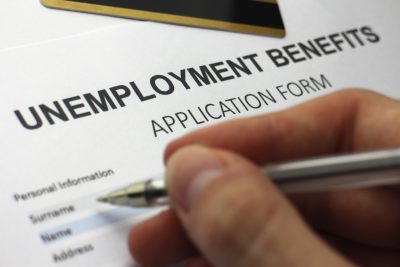Unemployment, Inflation and Economic Chaos. Millions of American Workers Have Dropped Out of the Labor Force

All Global Research articles can be read in 51 languages by activating the “Translate Website” drop down menu on the top banner of our home page (Desktop version).
To receive Global Research’s Daily Newsletter (selected articles), click here.
Visit and follow us on Instagram at @crg_globalresearch.
***
Today the mainstream media made a big deal about new weekly unemployment claims hitting a record low of only 199,000 last week. But the truth, as always, is in the details and not the headlines.
There are three reasons why new claims are at record lows:
1. In September the Biden administration allowed unemployment benefits for independent contract workers (gig, freelancers, etc.) expire altogether. There are at least 10 million such workers in the US. If there’s no longer an unemployment benefits program with which to file for benefits, that fact will of course eliminate a large number of new claims. Independent contracts may be jobless but they won’t file a new claim because there’s no program any longer.
2. At least 4 million workers have dropped out of the labor force altogether since the start of Covid in Feb. 2020. At least three and a half million are still dropped out. Probably 1-2 million are early retirees. Ordinarily if they were in the labor force they’d file for unemployment benefits–i.e. new claims. However, if they’re drop outs they are no longer eligible for filing a claim for benefits.
3. Also ineligible to file a claim for benefits are workers who just quit their jobs. We know job quits are high and continue as workers refuse to go back to low paid dead end jobs. (see my post ‘The Great Strike of 2021).
These three trends have been continuing since last August, and steadily reducing the number of new unemployment claims. Of course, some people have been going back to work as the holiday season approaches. But don’t think that is the full explanation for this week’s new unemployment claim lows.
Along with the news about new claims, the media is also trumpeting the message the economy is recovering robustly. Consumer spending is up. Personal income is up. And 4q2021 US GDP will be up.
What they don’t explain when they report consumer spending (2/3 of US GDP) is that the numbers reflect spending on goods and services, the prices of which are a big part of the increase. It’s mostly inflation in other words.
And we know inflation is surging. Officially the CPI rose around 6% last month. But that’s a low ball estimate–with gasoline prices up 35%, food prices up 10%-20% for many items and just about everything rising, with rent prices double digit (but lowered by assuming homeowners are paying themselves rent at 2% inflation). Inflation is at least 10% year on year, and more for median income families where the weights assigned to food, lodging, gas, etc. are greater than for all the income groups. So take consumer spending numbers with a grain of salt, as they say.
That’s not to say there hasn’t been some consumer spending increase recently–as typically occurs as holidays near. But even that is distorted by end of year ‘seasonality adjustments’ to the numbers that always boost the real actual spending greater due to the statistical operation called ‘seasonality adjustment’.
The slowing of the US economy in third quarter was quite clear. After a 6.5% GDP annualized growth rate in the 2nd quarter, GDP rose only 2.1% in July-September. And now we have supply chain problems in the current 4th quarter, probably not as much business inventory accumulation (that mostly drove the 2nd quarter), and the lack of government fiscal stimulus as the spring’s $1.9T American Rescue Plan has mostly been spent, the Build Back Better plan hasn’t been passed, and the Infrastructure Plan means no actual spending into well into next year..
The US economy is now moving sideways, at best, just as Covid appears about to surge again this winter. And just as the Fed is going to raise interest rates earlier and faster. And just as consumer inflation is obviously not a ‘temporary’ phenomenon and will likely cut into real consumer spending right after the holidays.
The not so temporary inflation appears increasingly as business across the board taking advantage of global supply chain–and domestic supply problems–to raise prices everywhere. In other words, it’s a supply problem, but one that is overlaid by rising inflationary expectations by business resulting in business price gouging almost everywhere. Inflationary expectations may also be beginning on the consumer side as well, which will lead to even more entrenched price inflation driven now by rising demand pressures as well.
For all these reasons, the 1st quarter of 2022 will be a critical juncture in the already weak economic recovery. And I am not as sanguine as the mainstream media about the condition of the US economy beyond just occasional weekly or even monthly headlines for this or that economic indicator,
So that’s my ‘not so short’ short note on the current state of unemployment, inflation, and the much hyped by media US recovery.
*
Note to readers: Please click the share buttons above or below. Follow us on Instagram, @crg_globalresearch. Forward this article to your email lists. Crosspost on your blog site, internet forums. etc.
Featured image is from brookings.edu

